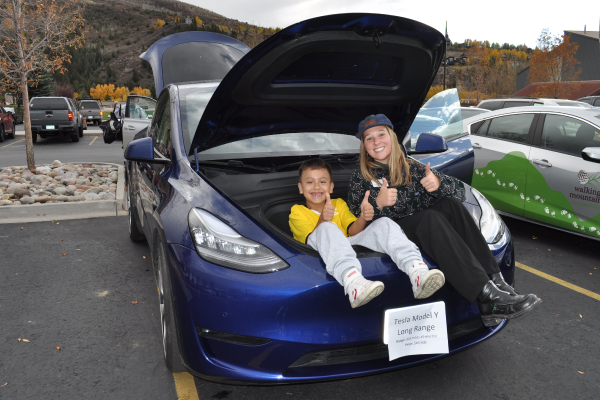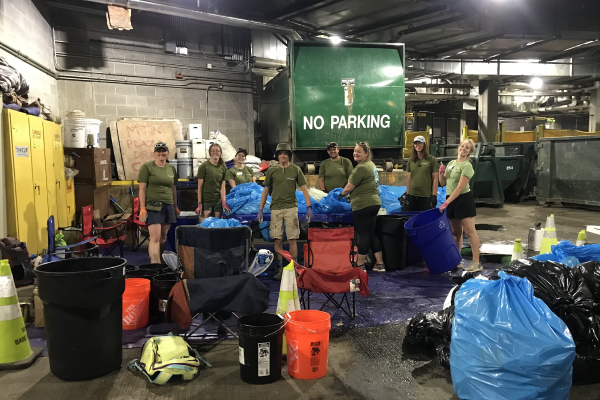December has arrived and cue the cliché about how fast time goes by. The holiday season looks like a lot of different things to a lot of different people, but I think it is safe to assume that at minimum, we all have the very human experience of reflection. December is a time to look back on the trials and tribulations of the last year and look forward to a new trip around the sun, ripe with possibility and resolutions. In the world of climate action, there is a sleigh-load of 2021 happenings to reflect on, so let’s get a little pensive.
‘Twas 2015 when 196 countries met in Paris for the United Nations Climate Change Conference, affectionately known as COP (Conference of Parties), and formed an agreement to try to limit global warming to “well below” 2ºC, in an effort to avoid the most catastrophic effects of climate change. In the 2015 Paris Agreement, leaders agreed to reconvene every five years to take a look at progress made, and update individual climate plans–called Nationally Determined Contributions (NDCs)–as necessary.
Local residents test out the "Frunk (front trunk)" of a Tesla at a Climate Action Collaborative Electric Vehicle Ride & Drive Showcase event in October at Mountain Recreation"
Five years, plus one COVID year, passed and this fall, Glasgow, Scotland, hosted COP26. This conference came in wake of the Intergovernmental Panel on Climate Change’s most recent jarring report, in which scientists stated “climate change is widespread, rapid, and intensifying.” Leaders came with updated NDCs for the first time since Paris and negotiated next moves. The talks at COP26 resulted in progress, not perfection. Ten years ago, we were on track for a terrifying, 4º- 6ºC of uninhabitable warming by 2100, but now, depending on how well those agreed upon pledges are implemented, we may manage to reduce it to a slightly less dangerous 1.8º - 2.7º C of warming. Keep in mind that we want less than 1.5ºC of warming to ward off the worst disasters and losses of life. You can explore more about COP26 here.
All these global negotiations trickle down to Eagle County. This past summer, the Rocky Mountain Climate Organization came out with a study that modeled various carbon emissions scenarios and looked at their effects on Eagle and Summit Counties. The report looked at three communities: Edwards/Avon, Vail Mountain, and Eagle. In all areas, "an average summer day in mid-century could be three degrees hotter than the single hottest day of the late 20th century."
In a scenario with moderate increases in carbon emissions, the average temperature highs during warm months (May-October) in each community will see increases of about 5ºF. Warmer winters are also predicted. Vail Mountain used to only see 57 days above 32ºF from November to April, but this will increase to 75 days in the period 2040-2059. This leads to a shorter ski season, with 17 days that are 40ºF or warmer from March to April, when there used to only be 12.
In sum, rising global temperatures will impact our county’s recreation economies, the health and safety of our communities due to increased risk of natural disasters, and our availability of natural resources. However, if you remember just one thing from this study, remember that action right now can prevent the worst of climate change impacts and that action must happen locally, nationally, and globally. We can limit warming to 1.5ºC with the right level of grit and determination. Walking Mountains' ZeroWaste Team at the GoPro Mountain Games working to divert event waste from the local landfill.
Walking Mountains' ZeroWaste Team at the GoPro Mountain Games working to divert event waste from the local landfill.
The Climate Action Collaborative and its partners have no shortage of determination. We’ve been working hard toward our goal of a 50% emissions reduction by 2030. We want to ensure that our communities can be looked to as leaders, and that no matter what the rest of the world does, we are committed to creating a more sustainable planet. To put a bow on our columns for this year and do a little bragging, I present to you my favorite part of this climate reflection: a 2021 Eagle County Climate Action Rundown. This list is not exhaustive and it certainly doesn’t capture all of the nuanced tasks and discussions that went into this year’s work. Know that there is momentum in our Buildings, Transportation, Materials Management, Energy Supply, Water, and Carbon Sequestration sectors. We’re proud and we’re grateful, and we hope you are too.
- We achieved our goal to divert 30% of overall waste.
- Town of Eagle set a goal to achieve net-zero emissions in the town’s internal operations by 2028, and net-zero emissions for the wider community by 2030.
- Both Avon and Vail passed a resolution to become GAoEV cities, pledging to create an Electric Vehicle (EV) Action Plan that dedicates time and resources to tackling transportation emissions.
- Eagle County governments got started on developing a Regional Transportation Authority, with the hope of creating a more effective public transportation system.
- An EV Supercharging station was built at Edwards Station, equipped with 4 universal Electrify America Chargers and 8 Tesla Superchargers. With this addition, the county now has over 80 charging locations and is now in the Top 10 most EV friendly counties in the United States.
- The Climate Action Collaborative developed a Governing Board to provide a nexus between action and legislation in the county.
- Eagle County School District’s Green Teams began their first year of a three year waste reduction plan.
- EagleVail implemented a road-diet–a reduction in traffic lanes and addition of recreation lanes to better facilitate multimodal transportation through the business center, and to connect a missing chunk of the Eagle Valley Trail.
- Vail conducted a pilot curbside composting program and saw success. Stay tuned for expansion.
- In 2020, Avon adopted EV Readiness building codes to help implement EV infrastructure into new construction and prepare for electrification of transportation. This year, they have enforced those codes in new developments within the town.
- Eagle County Conservation District won a grant that will help fund soil health improvements for seven agricultural producers.
- Eagle River Water & Sanitation District implemented new usage tiers that identified “unsustainable water users” in our community.
- Holy Cross Energy supplied 47% of its grid with renewable energy, delivering this to our homes and businesses.
- A Solar & Storage Study was completed that identified local land sites for renewable energy development.
- The Climate Action Collaborative launched the Trends with Benefits campaign, encouraging community members to work from home or leave their cars behind twice a week to help reduce transportation emissions.
- Walking Mountains’ Zero Waste Team diverted 27,918.21 lbs of waste from the landfill at their zero waste events for Eagle County. This equates to an 81% diversion rate.
- Colorado Mountain College has begun a college-wide, student-driven experiential learning approach to AASHE STARS (a framework for sustainability performance in colleges and universities) reporting, including GHG emissions.
- Walking Mountains rolled out a guide for all businesses to engage in climate action work – The Green Business Trail Map - resulting in over 350 action items completed by aspiring sustainable businesses.
- Walking Mountains Energy Smart Colorado program started offering large incentives for electrification in buildings.
To all our partners: thank you so much for the time and effort you put into this cause. Your passion and dedication is endlessly inspiring and will carry us far.
Wondering how you can get involved? Visit the Climate Action Collaborative website, or, take the Eagle County Climate Action Pledge!
To our readers: please visit climateactioncollaborative.org if you’d like to learn more or get involved. Happy holidays!
Links & Sources:
Paris Agreement: https://unfccc.int/process-and-meetings/the-paris-agreement/the-paris-agreement
IPCC 6th Assessment Report: https://www.ipcc.ch/assessment-report/ar6/
COP 26: https://unfccc.int/conference/glasgow-climate-change-conference-october-november-2021
Eagle County Climate Study: http://rockymountainclimate.org/extremes/eagle.htm
GoEV City: https://www.goevcity.org/
By Claire Cantor, Climate Action Collaborative






